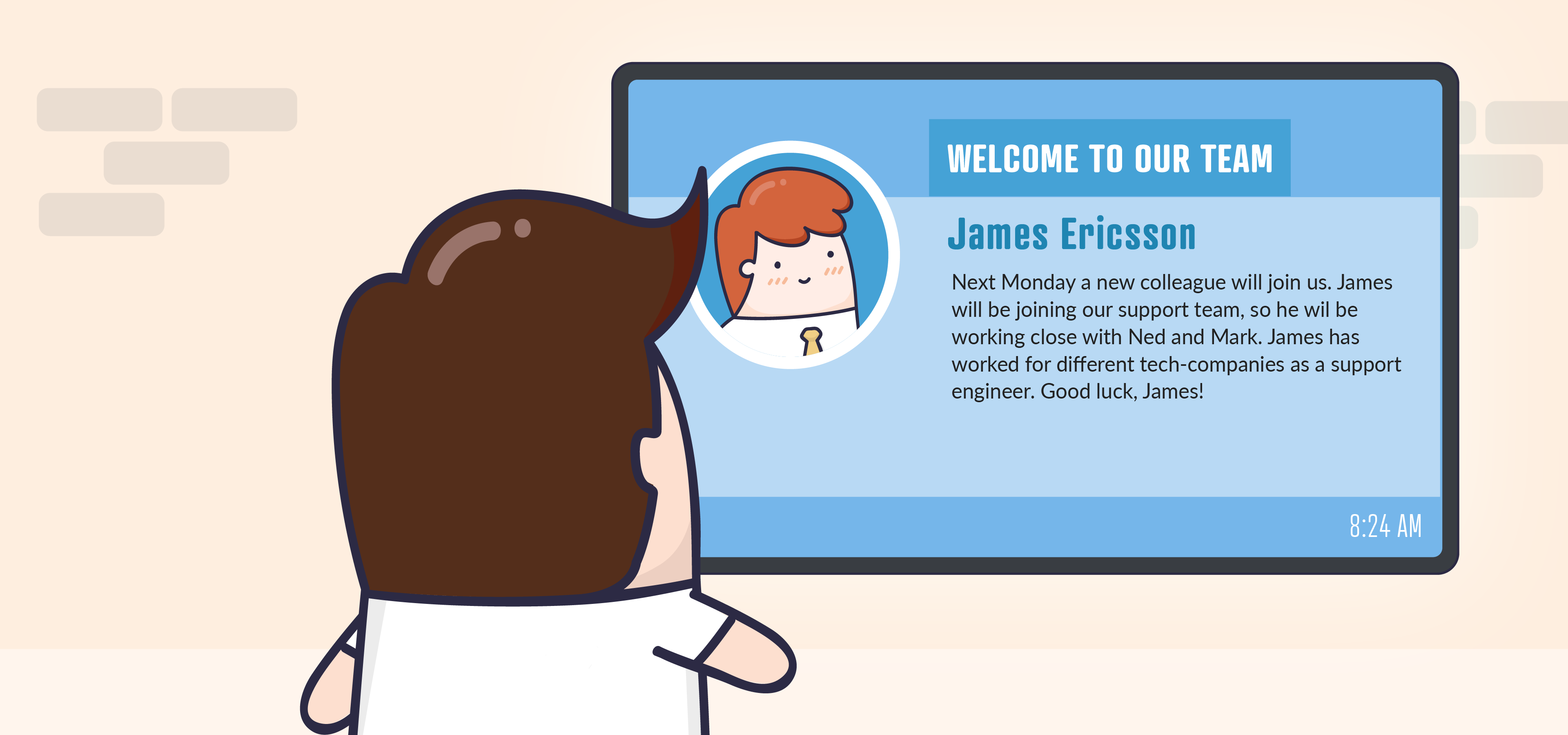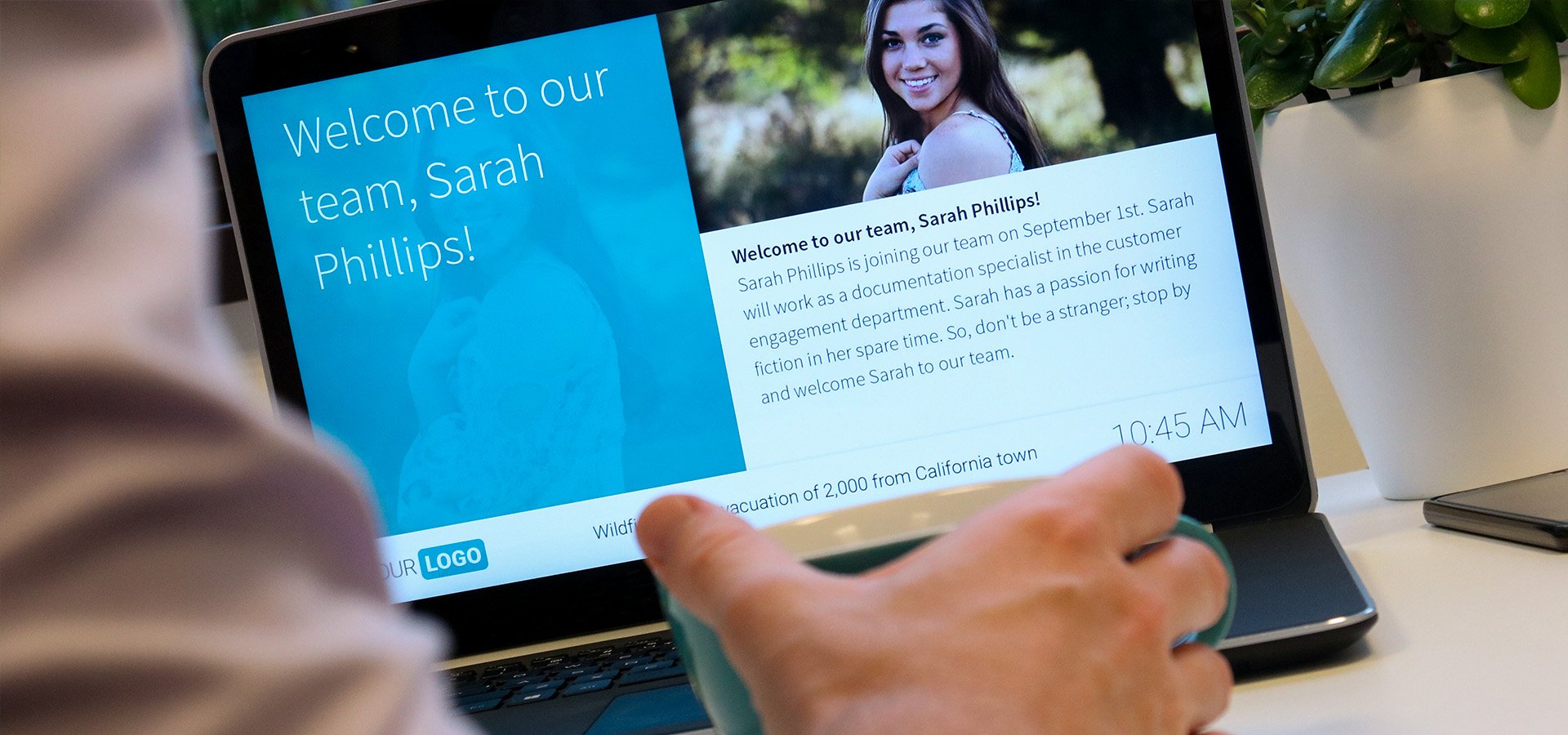All Aboard the Onboarding Train! Five Tips on Effective Onboarding
Estimated reading time: 7 minutes
51. That’s the percentage of currently employed adults in the United States that, according to Gallup’s State of the American Workplace Report, are searching for a new job. 17 is the percentage of employees a company loses within the employee’s first 90 days due to ineffective onboarding. And 90 to 200 is the percentage of an employee’s annual salary it will cost a company to find and onboard a replacing candidate. A lot of employers still believe their new hire will be loyal to their company once both sides have signed the contract. However, numbers prove they’re wrong. Effective onboarding is important: it increases the chance your new hire stays with your organization. But effective onboarding can be difficult. These are our tips that will help you keep your onboarding on track.
Table of contents
1. Make them feel welcome
This may sound like a no-brainer, but bear with us here. A BambooHR study states 17 percent of employees that left within the first six months of their job, said a warm welcome and a ‘friendly smile or helpful coworker would have made all the difference’. The worst thing for a new hire is to arrive on their first day and their workplace isn’t set up, the receptionist isn’t expecting them, or coworkers don’t know that today’s the day their new colleague starts their job.
Make your new employee feel like you’re excited to have them on the team and make them feel welcome. Appoint an onboarding buddy whose role it is to work with them for the first couple of days and continue to be connected afterwards. Ensure the employee’s workstation is complete and ready for them upon arrival on their first day. If you have digital signage screens or a corporate lock screen, publish a message that welcomes your new colleague: they’ll see they’re welcomed throughout the complete building, which creates a sense of belonging. In other words: show them you care.

2. Involve their team and their manager
According to Gallup’s Report, employees are 3.4 times as likely to label their onboarding process as successful when their manager takes an active role in it. 96 percent of new employees said their good onboarding experience was partly due to one-on-one time with their direct manager. Involving team members is also crucial; it helps outline the new employee’s role within the team.
Schedule time with the new employee’s manager to have relevant conversations in which both sides’ expectations are clarified and the definition of success in the organization is specified. Involve the team for both sides’ sake: when getting started at their job, having a buddy at work was very important to 56 percent of respondents in the BambooHR study. Team members are great teachers for new hires, and they can partly show their new colleague how things are done and inform them on company routines and culture.
Team members should also be included in the onboarding process to help clarify the position the new hire will take. Now there’s fresh blood in the team, it may be beneficial to spend some time redefining responsibilities for the entire team. The new team member, as well as existing team members, should clearly know how projects will run and how to interact with each other. This may also help to prevent existing team members from feeling threatened by their new coworker, as they may be transferring some of their tasks to him or her.
3. Make them introduce themselves
New employees want to know whether your organization is the right workplace for them. They will try to form a bond with their coworkers, and will want to feel accepted. However, for your new hire, trying to fit in can be scary! Help them out by introducing them to the entire company, not just their team members.
Make new hires introduce themselves through a message published on your digital signage, including hobbies or things they’re passionate about. This way, it’s easier for new hires and other employees to get to know each other. Other employees can read about their new coworker on your corporate app or a digital signage screen. As it turns out, opposites don’t attract. So, when your employees see they have similar interests to their new coworker, it’s easier for them to start conversations. In doing so, they can form a positive bond. Added benefit: positive bonds between coworkers increase employee productivity.

4. Train for triumph (but don’t overload)
Training new employees is clear as day, right? Obviously, someone needs to learn the ropes to be able to perform at their best (or to be able to perform, period). However, new hires have to process a LOT of information and training on their first couple of days. And according to Hermann Ebbinghaus’ forgetting curve, we forget information over time if we don’t try to retain it.
Although Ebbinghaus states the rate at which a person forgets depends on several factors such as memory strength and how meaningful the information is, we will still lose some of it. This means, your new hires will be likely to forget a thing or two they’ve learned when they first start their job. That’s why training your new hires should never be just a ‘one and done’ event.
To fight the forgetting curve, make sure you repeatedly show new hires’ training on their corporate screensavers. This won’t just help them to better memorize, it will also scale down the enormous amount of information coming at them. After all, you’re only presenting small chunks of their training at a time.
You can target only them by creating a ‘training’ channel in your message server, although it’s not a bad idea to train existing employees from time to time on things they ought to know (they can also fall victim to the forgetting curve!). Cybersecurity awareness training, for example, is something that can be repeated for all your employees as it is of such high importance. Compliance training for all employees could never hurt, either. Better safe than sorry!
5. Celebrate success
For a new employee, onboarding revolves around a series of firsts. Their first work projects and tasks, the first time they can share their talents with the organization, the first time they’re recognized for their talents and the first time their success is celebrated. Celebrating (first) success isn’t just fun, it can also increase employee engagement. It helps employees feel recognized for their work, which leads to higher levels of productivity and customer satisfaction. On top of that, doing well at their new job and being acknowledged for it, will make your new employee feel like the company’s a perfect fit. And in turn, that will make them want to stay.
The way success is celebrated depends on the company and on how big or small the success is. Big success may call for bigger celebrations. Small successes can be easily celebrated by simply acknowledging them. Let your employee know they did well and you’re happy they’re with you. For example, publish a slide on your digital signage to tell other employees what it was their coworker did well. This gives people a chance to congratulate their colleague. This way, your new team member will feel proud, which will give them renewed energy to also do well on their next tasks. Result: a happy employee, who knows what success looks like and will put in energy to repeat their victory.
Include these tips in your onboarding program, and your onboarding train is well on its way to retention station. Exactly where you want it to be heading! Interested in how we can help you successfully onboard your new colleagues? Feel free to contact us! Or download the free infographic about embracing the remote workstyle and flexibility in your organization.

